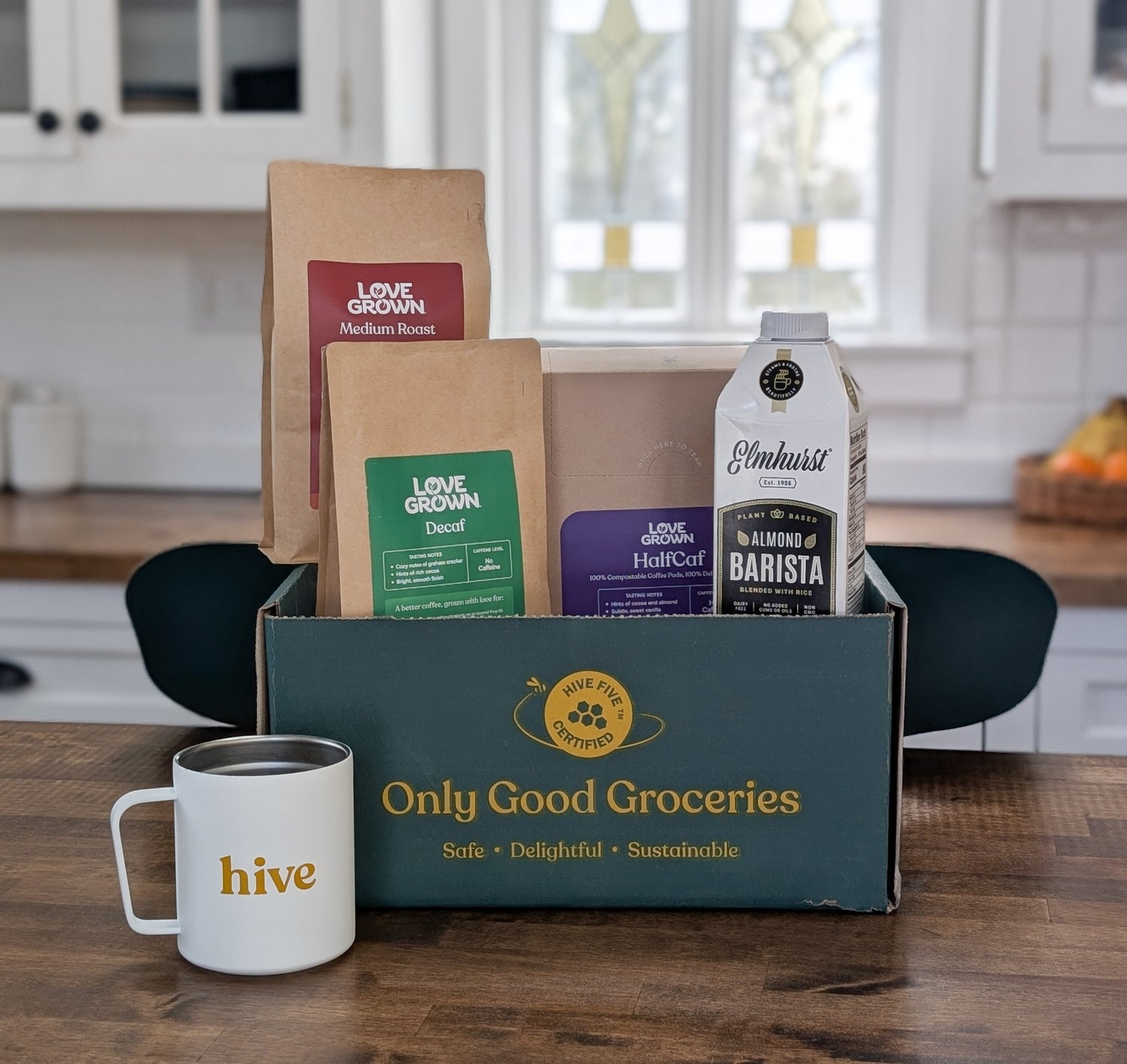It’s no longer breaking news that plastic is everywhere: in our food, water, air, and even our bodies. Yet plastic itself is only half the problem. Over 16,000 other chemicals, including phthalates, bisphenols, and PFAS, are added to plastic to make it stronger or more flexible. These chemicals are used throughout the food industry in processing equipment, cookware, and food packaging, where they migrate into our food and inevitably into us. That’s why Hive has always prioritized non-toxic, plastic-free packaging. Fortunately, national and state regulations have begun to catch up to consumer concerns and restrict the following “food contact” chemicals, although the future of federal food safety programs is at risk.

Phthalates
Uses & Concerns: Phthalates have been used for almost 100 years to improve the flexibility and durability of plastic packaging and food processing equipment (like tubing and conveyor belts). Phthalates are so ubiquitous they were detected in 99% of supermarket foods in a recent study. Regular exposure to phthalates can have negative health effects on the endocrine system and child development, including a correlation with higher rates of bone cancer in children.
Recent regulations: In 2022, the U.S. Food and Drug Administration deauthorized the use of 23 phthalates in food contact applications, although nine phthalates are still federally authorized. In January 2025, Minnesota introduced a bill that, if passed, will require food companies to test their products for phthalates and publicly disclose the levels and types detected.
Bisphenols
Uses & Concerns: Bisphenols, like BPA and BPS, have been used since the 1950s in the inner linings of cans and bottle tops to prevent rust and in shatterproof plastics like reusable water bottles. BPA readily leaches from packaging and has been linked to several health problems, including infertility, obesity, heart disease, and type 2 diabetes. In response, the food industry has shifted toward “BPA-free” alternatives like BPS and BPF, although they may have similar or worse effects on hormones and obesity.
Recent regulations: The FDA deauthorized BPA in baby bottles, sippy cups, and infant formula packaging all the way back in 2012, and it has been conducting a safety review of BPA in other food contact materials since 2022 (Europe banned BPA in all food contact materials in December 2024).
PFAS
Uses & Concerns: Per- and polyfluoroalkyl substances (PFAS) are known as “forever chemicals” due to their ability to persist for thousands of years in the environment. They’ve been used in non-stick coatings, sealing gaskets for food processing equipment, and grease-proof paper since the 1960s. PFAS exposure is linked with several negative health effects, including certain types of cancer and a suppressed immune response to Covid-19. Over 98% of Americans have detectable concentrations of PFAS in their blood.
Recent regulations: The FDA completed an industry-wide phase-out of PFAS as grease-proofers in paper food packaging in January 2024. They’re still authorized for use in non-stick pots and pans and processing equipment due to "negligible” migration. In April 2024, the U.S. Environmental Protection Agency established maximum contaminant levels for six PFAS in drinking water, giving public water systems until 2029 to comply.
Food Safety in Peril? Not at Hive
To strengthen federal food chemical oversight and improve overall food safety, the FDA launched the Human Foods Program in October 2024. Unfortunately, the new administration’s severe cuts to the FDA workforce this February led to the resignation of the HFP’s deputy commissioner, putting the future of the program in jeopardy. That’s why at Hive, we will continue to prioritize plastic-free packaging and look for innovative packaging solutions like our Love Grown Compostable Coffee Pods, which are made with non-toxic, soil-friendly materials. Bisphenols in our morning brew? No, thank you!

